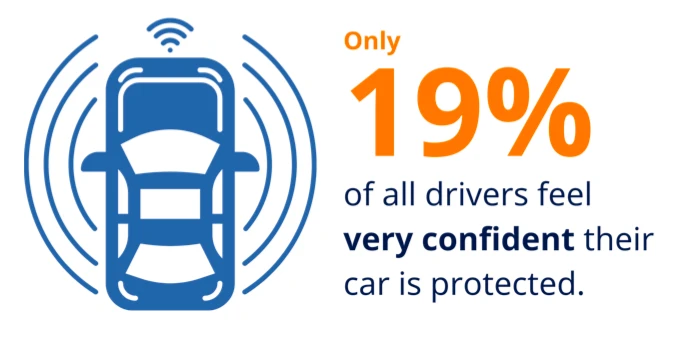Connected cars are smart, convenient, and open to cyberattacks
Consumers are concerned about vulnerabilities in their vehicles, which directly impacts purchasing behavior and brand loyalty, according to RunSafe Security.

Vehicles now run on over 100 million lines of code, which is more than most fighter jets, but they often lack the cybersecurity measures needed to keep them safe. These innovations bring plenty of convenience, from over-the-air (OTA) updates to smartphone integration, but they also create new opportunities for cybercriminals to exploit.
65% of drivers think remote hacking of their vehicle is possible. Even with that awareness, only 19% feel very confident their car is protected from hackers.
When drivers compare their cars to other connected devices, that skepticism seems justified. 40% believe their car is as secure or more secure than their smartphone or computer, which receive regular security updates and benefit from more established cybersecurity ecosystems.
Drivers’ awareness of cyber threats signals a tipping point: cybersecurity concerns are going mainstream faster than automakers can respond. That gap between growing consumer worry and slower industry action creates both risk and opportunity.
Physical safety drives concerns
Most drivers say they are concerned that a cyberattack could cause an accident or put their lives at risk, and nearly half worry about those life-threatening scenarios. Another 79% say protecting their physical safety from cyberattacks is more important than protecting personal data.
Consumers are starting to see connected cars as a whole new category of cybersecurity risk, one where an attack could cause real physical harm. That shift in awareness is fueling demand for solutions that go beyond protecting personal data and focus on keeping safety-critical systems secure.
Software updates could be the weak link in connected cars
Connected vehicles also face a tricky paradox: the same systems that deliver important safety updates can also create new entry points for attackers. In fact, 80% of drivers believe software updates could be hacked, showing they understand that OTA updates are both a strength and a potential weakness. Even Tesla owners, who have watched the company lead the way on OTA updates, share those concerns.
The worries do not stop there. Most drivers believe third-party components add to cybersecurity risks, and want automakers to be transparent about where their software comes from. The concern only grows with AI-powered systems.
By 2030, an estimated 12% of vehicles will be equipped with Level 3 and 4 autonomous driving capabilities, compared with 1% in 2025.
Consumers hold automakers responsible for attacks
Even with the complex mix of vehicle suppliers and tech providers, consumers have expectations about accountability when cybersecurity issues happen. Half think the vehicle manufacturer should take primary or shared responsibility, even if the problem comes from a third-party component.
For automakers, there’s a bigger warning sign: 70% of drivers say they might consider buying older, less connected vehicles to lower their cybersecurity risk. On the flip side, most say strong cybersecurity affects their buying decisions, and a third are even willing to pay extra for enhanced protection in their car.
“Connected cars have become computers on wheels, and with that transformation comes new risks that consumers increasingly recognize,” said Joe Saunders, CEO of RunSafe Security. “Automakers who invest in transparent, proactive security measures will capture a competitive advantage, while those who lag behind risk losing market share to competitors—or worse, driving customers to opt out of connected cars altogether.”